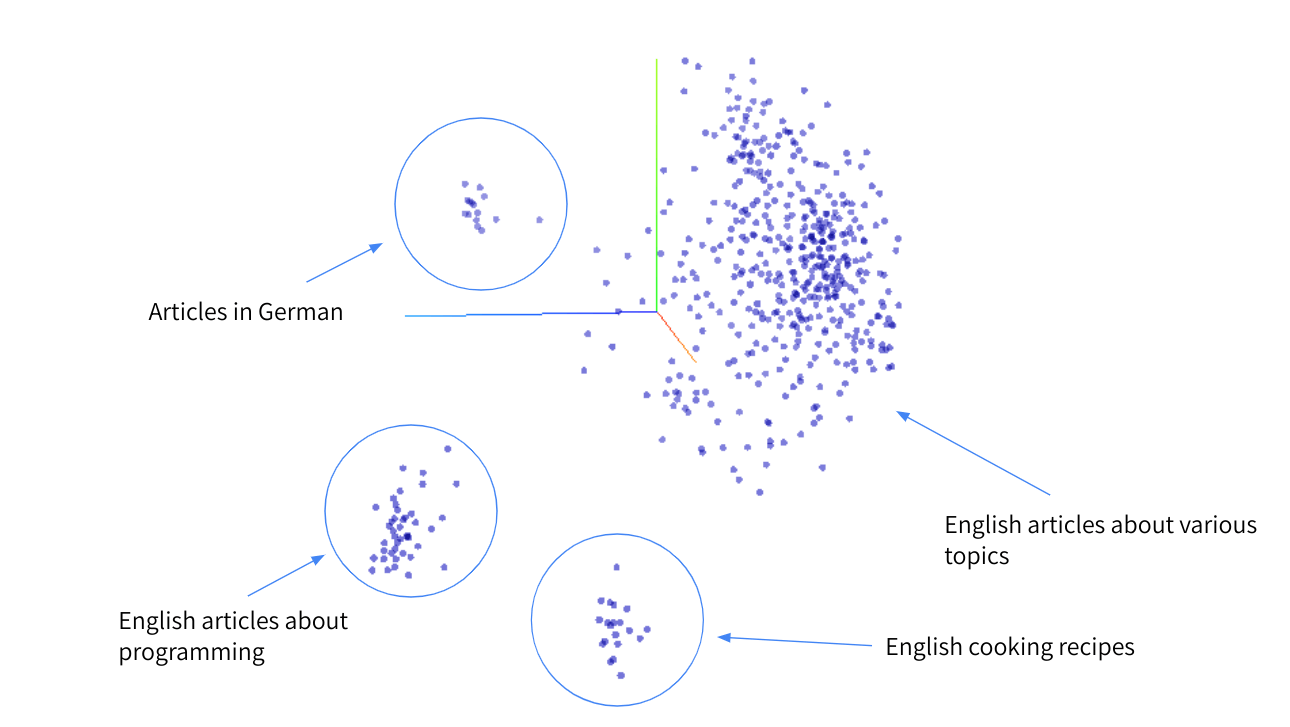Fellow writers (freelancers and full-timers), let me tell you a horror story.
A couple of months ago, one of my clients (I write as a freelancer) responded to one of my submitted articles with the following words:
“Hey, the AI detector is flagging certain parts of your article as AI-generated. Could you please have a look?”
Now, this is an old client and I’ve been writing for them before ChatGPT ever became a thing. They trust me and know that I have never used AI editors to write (honestly, it’s faster if I just write everything myself). But if it had been one of my newer clients, could I have expected the same measure of trust and leniency?
Given the online conversation around AI writing and art, I think not.
• What happens when you are accused of using AI to write (and you haven’t)
• Why you need proof that you are a human writer who doesn’t use AI-generated content
• How Authory can prove, to your prospective and existing clients, that you are a human writer
What happens when your writing is wrongfully identified as “AI generated?”
A few of Authory’s clients have asked this question, as have I. That one incident got me thinking….what keeps this from happening again? What happens if some AI detector decides to scan through my previous publications (I’ve been writing on the internet since 2017) and claims that I have copied my own style and articulation?
For the most part, clients will believe AI detectors over human claims. I understand that. Usually, humans lie, machines don’t.
But machines do glitch, mess up, and make mistakes.
To combat a machine’s mistake, you need another machine….and that’s what I’ll be discussing in this article. I’ll be showing you a simple way to ensure that you can materially prove the human origin of all your written content.
In other words, if your clients ever accuse you of using AI tools to write, you can have unimpeachable proof that the AI detector messed up is not you.
These concerns are not mine alone. In one of many such incidents, UC Davis student Louise Stivers was accused of using generative AI to complete her assignments, even though she did not.
“It was definitely very demotivating,” Stivers says of the accusation, which spiraled into a bureaucratic nightmare lasting more than two weeks as she sought to clear her name. She was expected to parse the school’s dense cheating policies and mount a formal defense of her work, with little institutional support and while facing the ordinary pressures of senior year. She calls this a “huge waste of time” that could’ve been “spent doing homework and studying for midterms.” Because of this split focus, she says, her grades began to slide.”
Louise certainly wasn’t the only victim of such unforgivable inaccuracy on the part of the AI detectors.
“A university student has been accused of using artificial intelligence (AI) to write a final paper for a criminal justice class. The student…Emily, received a grade of 0/15 for the paper, with her professor alleging that 9% of the content was likely copied straight from an AI source.
….According to the professor’s comments, the first paragraph and the first sentence of the second paragraph were the main culprits, with Emily’s first paragraph being only three sentences long.
Emily also found that she was not alone in facing this problem, with other students also being accused of using AI to write their papers.
The university uses Turnitin to check for plagiarism, and Emily was surprised to learn that her essay had triggered the AI detection system. She has since emailed her professor for clarification but has yet to receive a response. The accusation has resulted in her final grade dropping from 97% to 83%, thereby jeopardizing her chances of achieving a 4.0 GPA.”
Turnitin’s accuracy has already been called into question by professors worldwide.
“Professors across the world have already expressed their concern about TurnItIn's AI detection system. These tools were rushed to market, aren't definitively accurate, and have resulted in tons of false accusations about students allegedly cheating using ChatGPT. False positives are far more frequent than people tend to imagine, which is pretty dangerous for a university student who gets accused of something they truly didn't do.”
Things are bad enough that The Washington Post is writing articles on What to do when you’re accused of AI cheating.
So, to reiterate, these concerns are not mine (or Authory’s) alone.
How to prove that your writing is human-created and not AI-generated
With ChatGPT (and other AI editors) being accessible to everyone, many writers will use AI to generate content. Some will use it for research, while others will use it to do the actual writing.
If you want to distinguish yourself as a human writer valued for content only a human mind could write, you need some kind of unquestionable credentials to signify that “I am a human writer who does not use AI tools to write.”
Enter Authory.
Authory is a portfolio-building tool that helps you build a professional, future-ready portfolio with a couple of clicks. It finds and collects copies of all your bylined articles, published online. If you enter the URL of the site(s) where your work is published (with a byline), Authory will automatically import a copy of every existing piece, as well as any piece published (with the byline) in the future.
Sign up, type in a few URLs, and Authory creates and regularly updates a full repository of your work.
Once your Authory database is updated, Authory can use this content repository to prove that your content is, in fact, created by a human writer.
Authory’s big advantage is that it stores and maintains an archive of every customer’s content. Instead of looking at their writing in isolation, Authory’s AI-detection algorithm looks at the writer’s ENTIRE publication history. This allows it to recognize, internalize, and judge each writer’s personal writing style closely, almost without inaccuracy.
It also allows Authory to perform something called content fingerprinting.
Content Fingerprinting
As mentioned above, Authory has a repository of writing (as well as video and audio content) for each user on its database. Our in-built algorithm scans through every article/tweet/post created by every author and creates a “content fingerprint” for every single one.
In other words, if I have used Authory to import around 300 articles from 7 different clients’ websites, the algorithm will examine each article and create a content fingerprint, completely unique to me.
In actuality, Authory generates multiple fingerprints for each author and then selects the most relevant one — the one that aligns with the maximum number of articles in their portfolio. The main reason for doing this is that a single writer can use multiple styles, depending on what they are writing.
Additionally, to ensure that there is no question of including any AI-generated content, the fingerprint is generated using only the content written before December 2022.
To get a bit more technical, here’s how it works:
“For each of these content pieces, we generate an embedding using a large-language model that we trained specifically on generating embeddings based on the style of about a million articles. An embedding is essentially a mapping of some input (in our case text) to a vector, where semantically similar vectors (in our case similar writing style) are placed closer together. The model ignores the actual content of the text and only focuses on style.”
You can actually visualize this process. We certainly have:

The chart depicts a writer writing on different topics in multiple languages, being published on variant platforms. The algorithm categorizes an author’s work into these clusters, and similar pieces are grouped together.
In the image, you’ll see that long-form pieces on different topics are in separate clusters. One contains articles about programming (in English), while another contains articles in German and one more contains articles about recipes (in English).
The algorithm is able to create these clusters because specific topics require specific input — programming articles contain code, while recipes contain lists (ingredients, guidelines, etc..)
The visualization was generated using t-SNE, an algorithm that can embed high-dimensional information into a more convenient space. While the above is a 3D visualization, the actual embeddings are 32-dimensional and capture way more details than can be represented in the chart above.
To summarize the process, here’s the down-low:
“Authory stores millions of articles from hundreds of customers. This data helps with creating a custom detection model for every single customer.
If a customer writes a new piece, and they want independent proof that it's not been written by AI, we don't only have to look at said piece in isolation. We can compare it to 200 other pieces by the same customer.” — Eric Hauch, Founder, Authory
The Comparison Stage: Before ChatGPT vs. After ChatGPT
Essentially, content items with similar “embeddings” (content elements) are clubbed into single clusters. These smaller clusters are merged recursively until you get larger clusters with very similar content elements. The “embeddings” of these larger clusters are then saved as the author’s “fingerprint”.
The “fingerprint” here is a unique marker of the author’s style, based on everything they’ve written in their career (until December 2022).
Next, the algorithm dives into newer articles, i.e., ones written after December 2022 when ChatGPT became publicly accessible. These articles are “clustered” in the same way, and their “embeddings” are compared with the “embeddings” identified earlier — the ones that determined the content fingerprint.
The Consequence of Comparison: Awarding The Human Writer Certificate
If the aforementioned comparison shows that the majority of the author’s new article matches the style of the old articles (before the emergence of ChatGPT), then they are awarded Authory’s Human Writer Certificate. You can use this certificate to provide credible proof of the authenticity of your texts to prospective employers or clients. It once and for all establishes that your writing is not AI-generated, and never has been.

Real-World Results
Of course, we wouldn’t make these claims without testing Authory’s AI-detection algorithm in the real world. Once again, Emanuel Jöbstl, Authory Co-Founder & CTO explains:
“We verified this approach with a group of writers of whom we know they used ChatGPT to write articles, as well as a control group of writers of whom we know they did not use ChatGPT.
The control group not using any AI tools to write texts had about 20,000 articles written before December 2022 in total. They wrote roughly 500 articles since December 2022, which were checked for outliers. The ratio of outliers was consistently below 10%.
The group that used ChatGPT had roughly 11,000 articles written before December 2022. They wrote 220 articles since December 2022, which we checked for outliers. The ratio of outliers was consistently at or above 50%.
We want to emphasize that the LLM used for generating embeddings was trained unsupervised. The goal was to minimize the L2 distance between embedding vectors for the same author while maximizing the distance to embeddings for other authors. We verified the quality of embeddings with a distinct test dataset.”
And that’s why Authory’s Human Writer Certificate is reassuringly credible. If you’re ever accused of using AI tools to write, simply show this certificate, and you will be unimpeachably exonerated of the charges.
What customers say about the Human Writer Certificate
The proof is in the pudding…or in this case, the tweets.
BOOM. I keep my promises, y'all. You won't see AI content with my byline on this feed. Like, ever. https://t.co/B4HX04drmA
— Wanda Thibodeaux (@WandaThibodeaux) May 17, 2023
this is pretty cool →@Authory created a "Human Certificate"—it analyzes your portfolio and creates a "fingerprint" for your writing to compare new writing against.https://t.co/y95kBXKWES
— Jimmy Daly (@jimmy_daly) May 11, 2023
Will something like this keep me in business as AI closes in? I'm not sure, but I appreciate being recognized for using my human brain. A fascinating initiative from @Authory —https://t.co/ybLxwRttjD
— Colleen Fisher Tully (@colleenftully) May 9, 2023
Delighted that @Authory has certified me as a "Human writer". Take that, pesky AI bots! https://t.co/US6lBNsXEt
— Ángel Gurría-Quintana (@AngelGurriaQ) May 3, 2023
Sean Michael Kerner's Spring 2023 Human Writer certificate https://t.co/zBLW0YnjcW
— Sean Kerner (@TechJournalist) May 3, 2023
That's write I'm human. I write about #AI. Skynet hasn't won (yet).
Intrigued? Interested? Think it’s a total scam?
Either way, you can absolutely test it for yourself. Sign up for a 14-day free trial of Authory, import all your published content, and let the algorithm work its magic on your life’s work. Your Human Writer Certificate awaits.




